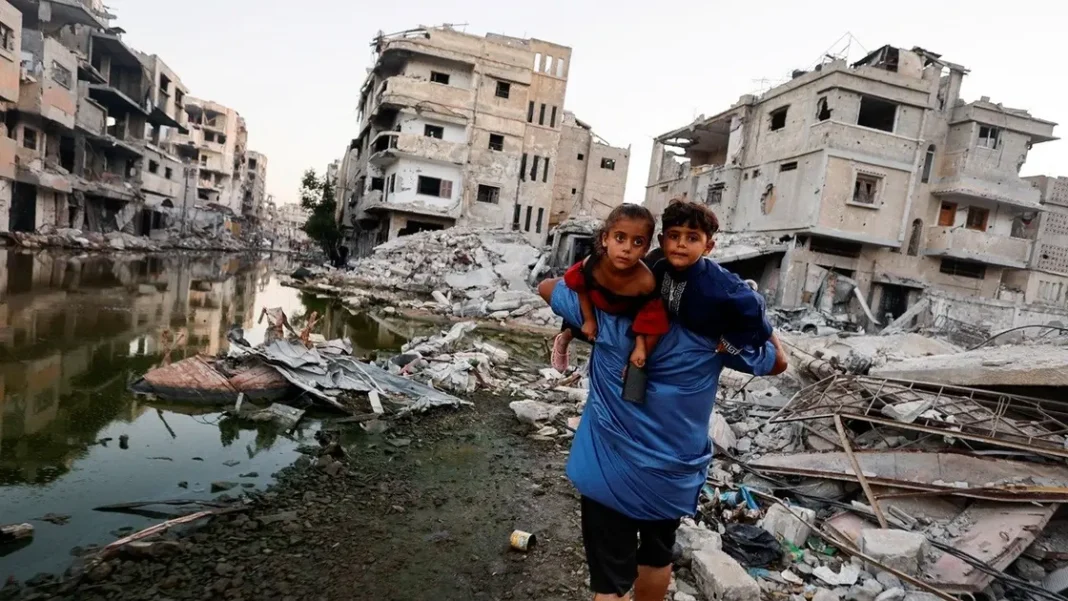On Monday, the Palestinian militant group Islamic Jihad launched a series of rockets into Israel. As a result fierce battles continues in Gaza. Israeli tanks advanced deeper into the territory. Islamic Jihad is aligned with Hamas and backed by Iran. They targeted Israeli communities near the Gaza fence. In response to what they called “crimes of the Zionist enemy against our Palestinian people.” Despite the barrage of about 20 rockets, the Israeli military reported no deaths. This incident demonstrated the militants’ continued ability to launch rockets over nine months. After which Israel launched an offensive to neutralise these threats.
Evacuations and Military Movements
Israeli phone calls instructed residents in the southern Gaza neighbourhood. Eastern Khan Younis region is designated as a humanitarian zone for their safety. Israeli army spokesperson Avichay Adraee reinforced this call on social media. By suggesting that Israeli forces might return to the area they left weeks ago.
The Israeli military stated that the rockets were launched from the Khan Younis area. Prime Minister Benjamin Netanyahu declared that Israel was close to achieving its goal of taking down Hamas’s military capabilities. Following the October 7 incident that started the current conflict. Netanyahu emphasised that less intense operations would continue to target Hamas members.
Violence in West Bank
On Monday, violence erupted in the Israeli-occupied West Bank. The Palestinian health ministry reported the deaths of a woman and a boy in Tulkarm during an Israeli operation. An Islamic Jihad member was killed by an Israeli attack the day before. In Gaza, militants kept fighting Israeli forces in places the army had left. Israeli tanks moved further into the Shejaia neighbourhood of eastern Gaza City. Later deeper into western and central Rafah, near the Egyptian border.
Casualties and Military Operations
The Israeli military declared that a soldier had died in a house. This had been planted with explosives in Rafah, in the southern part of Gaza. Israeli Army Radio linked this incident to the Islamic Jihad’s report of a similar attack. Additionally, an Israeli airstrike in Rafah killed a militant who had fired an anti-tank missile at Israeli troops. Israel signalled that its operation in Rafah aimed to end Hamas and would soon conclude. The Israeli forces plan to conduct smaller-scale operations to prevent Hamas from regrouping.
War Toll and Ceasefire Efforts
Gaza has been devastated by the battle since it started on October 7. The fighters led by Hamas killed 1,200 people and kidnapped about 250 more in southern Israel. The Gaza Health Ministry reports that around 38,000 people have vanished. But it does not make a distinction between militants and civilians. Israeli sources claim at least a third of the Palestinian dead are fighters. Israel has lost 317 soldiers in Gaza.
Efforts by Arab mediators and the United States to stop the war have failed. Hamas wants the war to end and for Israel to leave Gaza completely. But Israel only agrees to temporary pause until Hamas is defeated.
Detentions and Allegations of Abuse
Israeli authorities released 54 Palestinians detained during the war. Including Mohammad Abu Selmeyah, director of Al Shifa Hospital. He was arrested when Israeli forces stormed the hospital in November. Israel accuses Hamas of using the hospital for military purposes. By showing CCTV footage of gunmen and hostages on the premises and revealing a tunnel in the complex. Abu Selmeyah and Hamas denied these claims.
Upon his release, Abu Selmeyah spoke at a press conference in southern Gaza. He alleged detainee abuse, including deprivation of food and medicine, and physical torture. He claimed his finger was broken, and he was repeatedly beaten until he bled. But Israel had previously stated it was investigating the deaths of Palestinian captives. Along with the conditions at a military-run detention camp. The military did not comment on Abu Selmeyah’s allegations.





